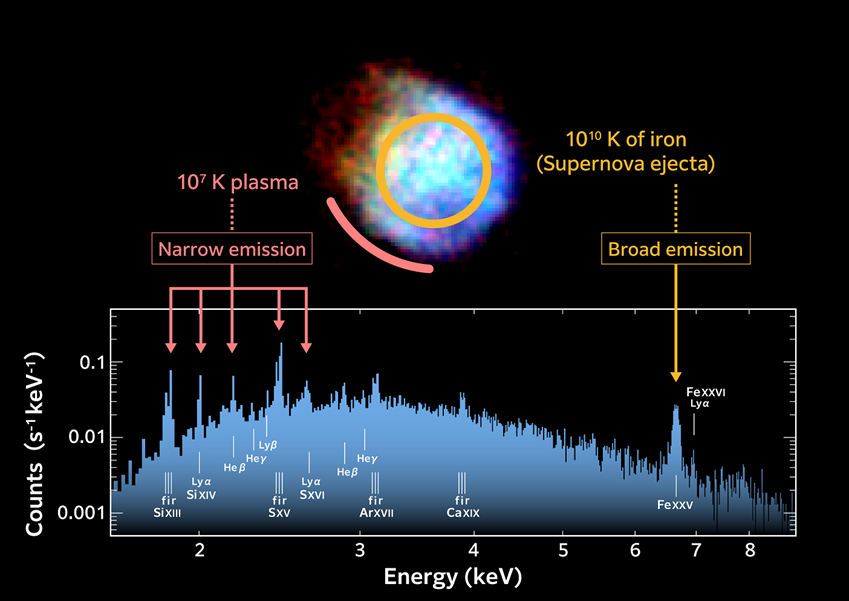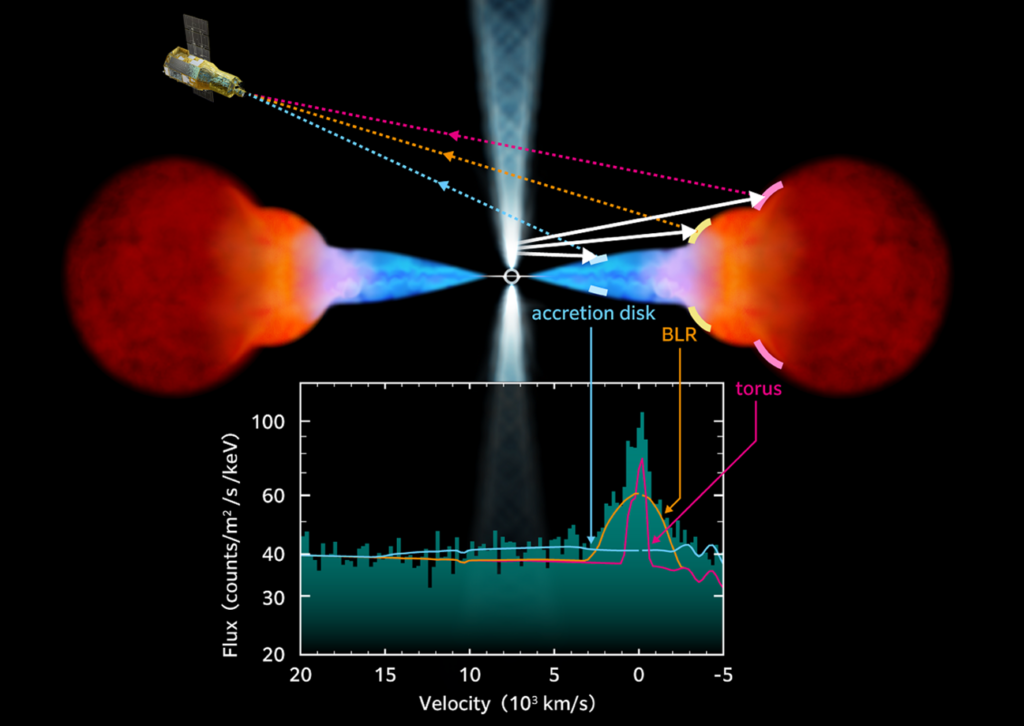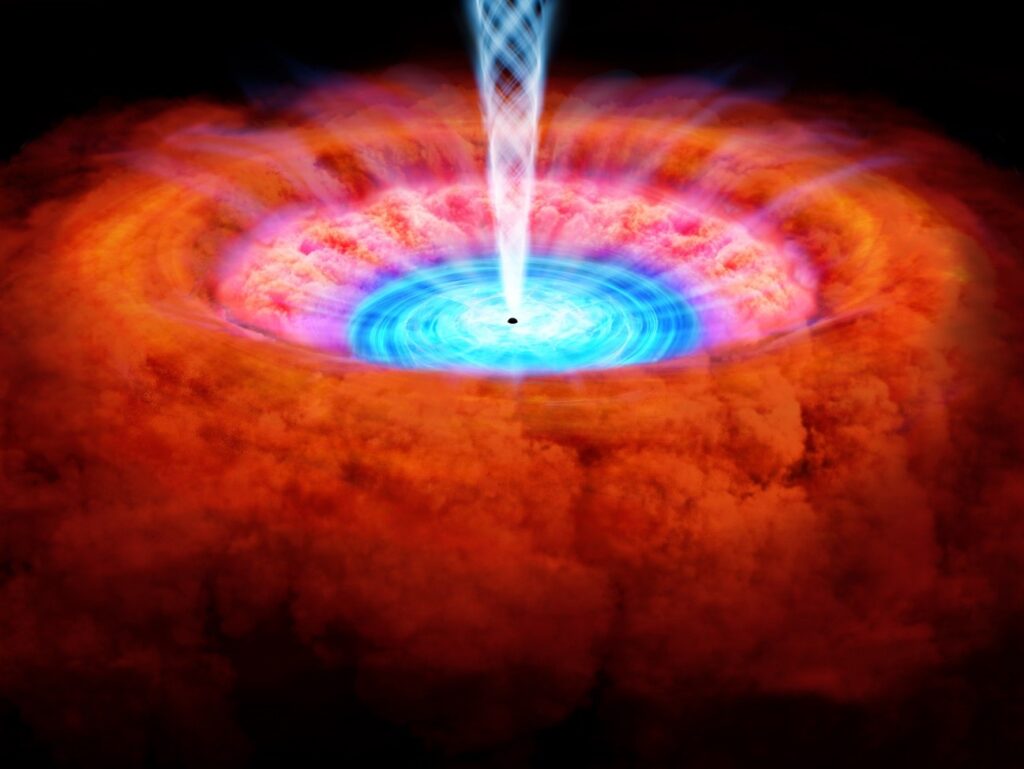Following its launch on September 7th, 2023, and the subsequent series of tests, the XRISM X-ray telescope has produced its first two scientific papers. The team marveled at a temperature of ten billion degrees Celsius inside a supernova remnant. And it measured the distance of the dust ring around a supermassive black hole. In the case of NGC 4151, this turns out to be 0.1 light years. SRON has developed the filter wheel and an X-ray source used to calibrate the energy scale of the Resolve instrument.

Supernova remnant N132D: Iron of 10 billion degrees Celsius
N132D, a supernova remnant located 160,000 light-years away in the Large Magellanic Cloud, is the aftermath of a stellar explosion that occurred about 3,000 years ago. When a massive star ends its life, it undergoes a gigantic explosion, called a supernova, releasing material into space at speeds of several thousand kilometers per second. This explosion creates a shock wave that heats the expelled gas as well as the ambient matter to over a million degrees Celsius, forming a supernova remnant. Supernova remnants provide heavy elements, such as iron, and energy into interstellar space, driving processes like star formation and cosmic-ray generation—crucial to the overall “material and energy circulation” of the Universe, which eventually leads to the formation of planets and life itself.
However, the exact temperature and energy distribution within these remnants have remained elusive. XRISM’s high-resolution spectroscopy has provided a breakthrough in understanding this process. During the first-light observations of N132D, XRISM captured X-ray lines from heavy elements such as silicon, sulfur, and iron, allowing scientists to measure their temperatures precisely. A careful analysis by the research team has revealed that the iron ions have very likely reached temperatures of around 10 billion degrees Celsius.

Supermassive black hole NGC 4151: dust torus at 0.1 lightyears
XRISM has also shed light on the structure surrounding the supermassive black hole in NGC 4151, a spiral galaxy located 62 million light-years away. The mass of this black hole is estimated to be about 30 million times the mass of the Sun. Supermassive black holes are critical in shaping galaxies, as they pull in and expel matter and energy that can influence star formation and the galactic environment. Therefore, understanding how matter flows into and out of such black holes is crucial for understanding galaxy evolution.
XRISM’s observations focused on the “molecular torus”; a dense ring of gas and dust that encircles the black hole. Using its superior spectroscopic capabilities, XRISM determined the inner edge of this torus lies about 0.1 light-years from the black hole. Additionally, the satellite was able to map the distribution of matter within the black hole’s accretion disk and the so-called broad line region, which extends from the black hole’s vicinity outward.



